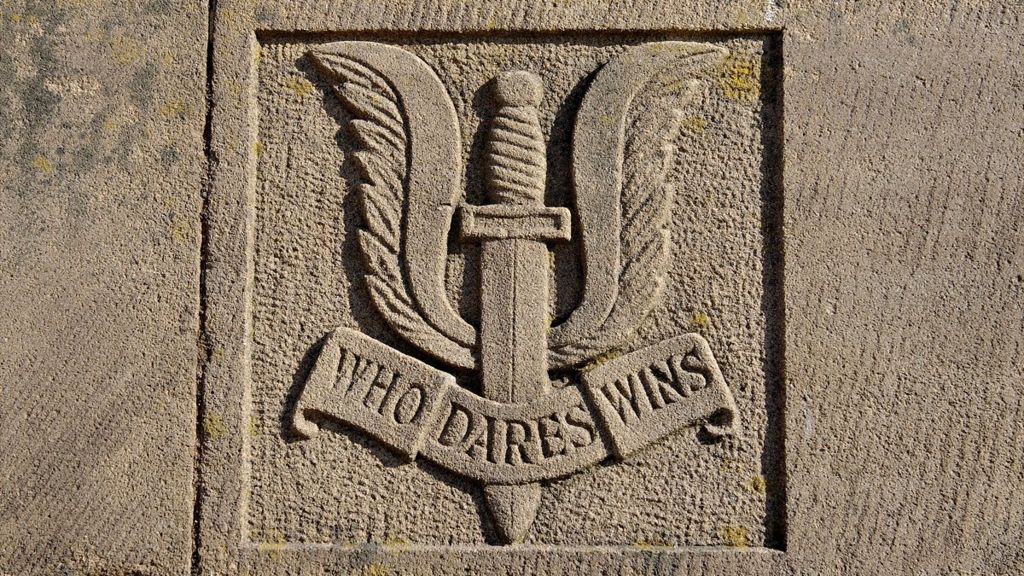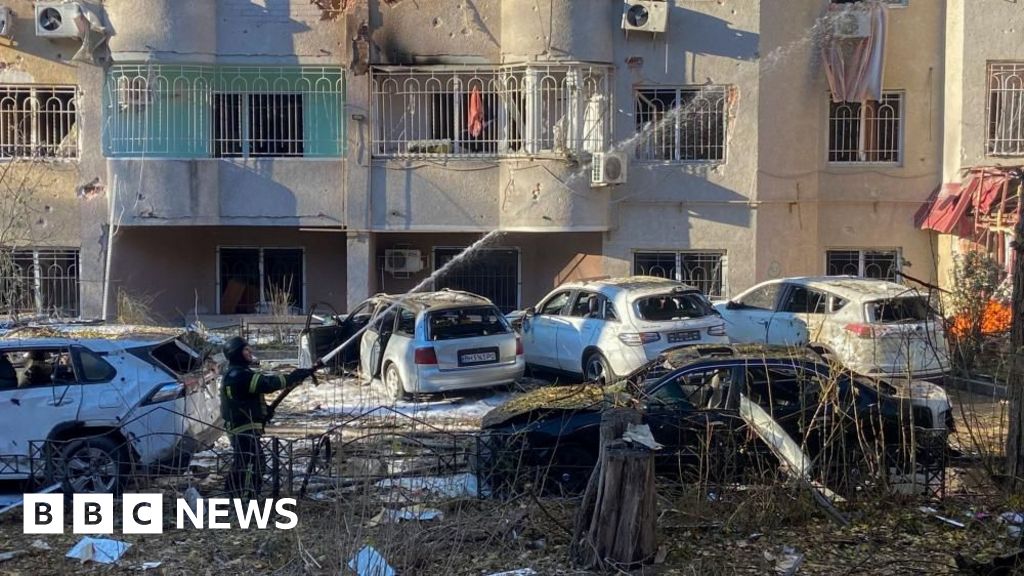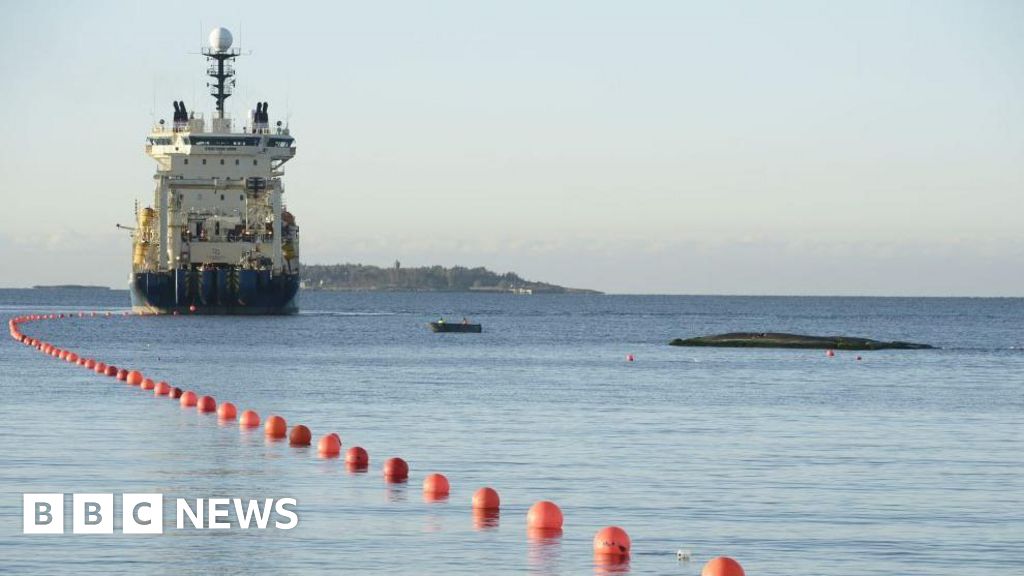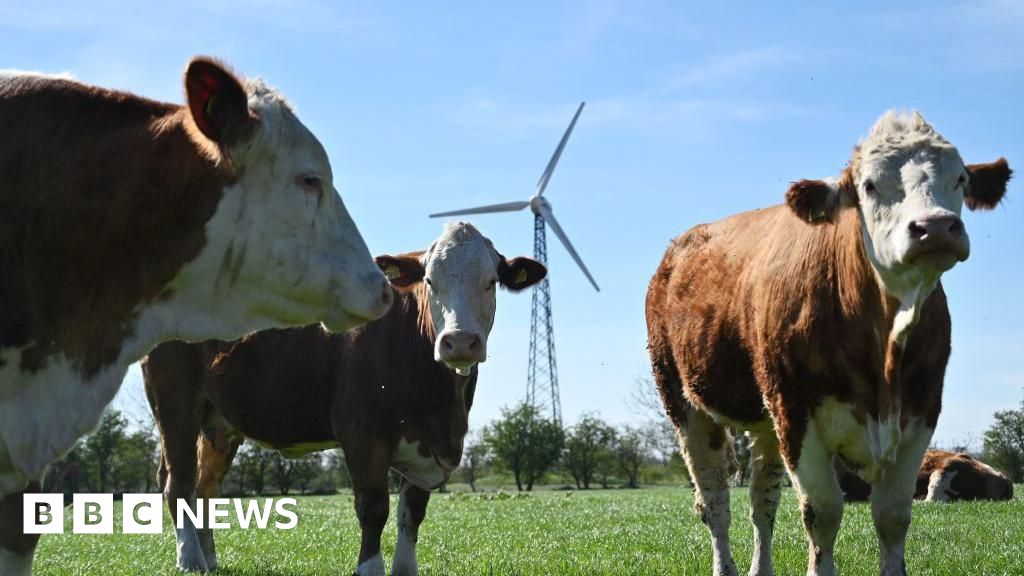ARTICLE AD BOX
By Panorama
BBC News
 Image source, Alamy
Image source, Alamy
Panorama has revealed disturbing evidence of war crimes by the SAS in Afghanistan - and of subsequent attempts to cover them up. Hannah O'Grady describes how a series of alleged murders of civilians was finally brought to light.
Getting to the bottom of this story involved four years of painstaking detective work.
Crucial to this was a cache of internal emails from within the headquarters of UK Special Forces (UKSF) - the military directorate that oversees the SAS. These contained a handful of details about previously classified deadly raids that senior UKSF officers had considered suspicious back in 2011. At the time, British troops were still fighting the Taliban alongside allies in Afghanistan.
We were able to see these emails because they were included in court documents from a judicial review into a night raid previously investigated by Panorama in 2019, which brought to light evidence that the UK military had failed to properly investigate a series of suspected civilian murders in Afghanistan.
We knew from sources within the Royal Military Police (RMP) that investigators believed that suspect killings were far more widespread than the three incidents featured in our initial programme.
But all we had to go on from the court documents were around a dozen dates of when the raids took place, and sometimes the number of people killed. We had no way of identifying where they had occurred from the documents alone.
RMP investigators had been prevented by armed forces headquarters from visiting the sites in question. Our RMP sources also told us a lack of co-operation from UKSF prevented them from interviewing senior Special Forces officers and that they suspected pressure had been exerted from on high when they were ordered not to view potentially crucial aerial footage of the operations.
The Ministry of Defence spokesman said that British forces "served with courage and professionalism in Afghanistan" and were always held to the "highest standards". The MoD said it could not comment on specific allegations, but that declining to comment should not be taken as acceptance of the allegations' factual accuracy.
Then we had a breakthrough. A source - who must remain anonymous - handed us hundreds of contemporaneous military reports.
They didn't disclose the precise location of the raids, but they did offer potentially vital clues about what had happened during each one. We trawled through hundreds of these operational accounts.
Then we spent months trying to work out where they had taken place. To do this, we scoured press cuttings looking for incidents that might match those in the court documents - our colleagues in BBC Monitoring had archived and translated local language news coverage from 2011.
Panorama was also given access to a leaked US military log. Combing through that, we looked for events that might match a British night raid.
We spoke to journalists who had covered the conflict, including incredibly brave local reporters, as well as soldiers and other British officials in Afghanistan.
Together, this gave Panorama enough to travel to Afghanistan and speak to witnesses, who would give their evidence for the first time.
Image source, Australian Special Forces
Image caption,View of southern Afghanistan from a military helicopter
The US military log had given us a map grid reference that led us to the village of Nad Ali, in Helmand province. There the Panorama team met Haji Habibullah - a charismatic, bear-like man in his 70s whose neighbours treated him like an elder.
But his demeanour changed when he described the killing of his two young sons aged 16 and 20. Remembering what happened to them, Habibullah broke down and wept.
In the early hours of 7 February 2011, Habibullah's sons, Samiullah and Nisar Ahmad, had been sleeping in a single-room guesthouse in the grounds of the family home. Alongside them were seven mourners who had come to the village for a funeral.
Then four helicopters carrying SAS personnel landed in the nearby fields - and soon, all nine people in the guesthouse were dead.
Haji Habibullah
Haji Habibullah's home in Nad Ali
According to the official SAS account of the incident, they had believed the property was linked to a Taliban leader. As the troops entered the compound, the SAS said, several insurgents opened fire - so the SAS then shot back, killing those in the guesthouse. The report adds that three AK-47 rifles were recovered in the raid.
But that wasn't how Habibullah remembered it. All those who died had been unarmed civilians, he said, unconnected to the Taliban.
He took the BBC team to the guesthouse. It had been bricked up - the memory of his sons' deaths had made it too painful to use again. "When I remember them it hurts me so much," Habibullah said.
Panorama examined the guesthouse, measuring and photographing marks on the walls. Fragments of what appeared to be bullets were still present, embedded in the wall.
All but one set of bullet holes were in clusters less than 75cm from the floor.
After returning from Afghanistan, Panorama showed the photographs and measurements to an expert in UKSF weaponry, who said multiple rounds appeared to have been fired from above - which suggested the men had been shot while they were lying down or sitting against the wall, and not in a firefight.
We also discovered that several years after the shootings, RMP investigators had viewed photographs of the scene, taken in the immediate aftermath, and drawn the same conclusion.
One military police officer told us they also thought the low height of the bullet marks in the wall significantly undermined the SAS's version of events. But because of the obstruction they faced from others within the military and the Ministry of Defence, the RMP had felt they stood little chance of prosecuting anyone for murder.
In its statement, the MoD said: "No new evidence has been presented, but the Service Police will consider any allegations should new evidence come to light."
Moreover, Habibullah described how all nine men had been shot cleanly to the head or chest - a common characteristic of a deliberate SAS shooting at close range.
The raid was also suspiciously similar to another SAS operation we had looked at in our 2019 investigation, in which everyone inside a guesthouse had been killed, including a 12 and 14 year old boy, with clusters of bullet holes left close to the floor.
And indeed, it appeared that guesthouses were specifically targeted - a source who served with the SAS in Afghanistan told us it became an unofficial "policy" to kill everyone they encountered inside one, whether they were armed or not.
It is notable that while nine people - suspected insurgents, according to the SAS - were killed in the Nad Ali raid, only three guns were recovered in the SAS's version of events.
Habibullah's insistence that those who died were not armed raised the possibility of the use of so-called "drop weapons" - planted to make it appear that defenceless people had been armed when they were killed.
We spoke to people who had served with the SAS squadron who confirmed they had witnessed AK-47s being planted in this way.
In the immediate aftermath of the Nad Ali incident, there were suspicions that something had gone terribly wrong. Back at Special Forces HQ in London, in a secret memo, a senior officer had shared concerns with the head of UK Special Forces.
Another 2011 raid that matched one of the dates in the UKSF documents caught our attention. A small mention of civilian casualties in a local newspaper article helped us find it.
Two days after the incident in Nad Ali, eight people were killed by the same unit during a raid on a home in the village of Khanano, in Musa Qala, towards the very north of Helmand. This time seven were shot dead in a guesthouse, and a further detainee was later killed inside the main house.
The similarities with previous incidents were striking. Again, everyone in a guesthouse had been killed and, according to the SAS, fewer AK47s were recovered than the number of people shot dead.
According to the SAS's operational account, an insurgent fired at the SAS as they approached and was killed. In the guesthouse they found four dead bodies, plus two armed men who were apparently responsible. These supposed insurgents were then shot and killed by the SAS, their official version of events said.
Then, it continued, the other inhabitants of the house surrendered and were rounded up - and when another man was taken inside the main building to assist with the search, he picked up a concealed rifle and aimed it at the soldiers, so he too was shot dead.
But people within UKSF told Panorama the SAS's account of the raid described a very unlikely set of events. We had learned from military police sources that the RMP had been concerned that blood patterns and other details in photos taken at the scene were not consistent with what the SAS claimed had taken place.
We discovered senior UKSF officers had remarked in emails sent the following day that the incident was suspiciously similar to several other operations in which an Afghan man had been taken into a property after surrendering to the SAS, then supposedly grabbed a weapon and was shot before he could open fire.
Panorama travelled to the scene and met Mohammad Daud, 43, a quiet, unassuming man who remembered the events of that night in stark detail. Daud told us two of his brothers - Mohammad Tahir, who was 15, and Abdul Zahir, 25 - had been killed along with five others staying in the guesthouse.
Daud said that after the killings, he had discovered that two of the dead men may have been linked to the Taliban. He said they were strangers who had shown up on their doorstep asking for shelter - it's a common Afghan custom to offer travellers a room.
But the family strongly denied that any of those who died had been armed or that they had fired on the SAS.
According to Daud and his family, all seven men in the guesthouse were found lying dead inside the room. This does not tally with the SAS unit's own account that the first person killed by the SAS had been outdoors, threatening troops with an AK rifle. The military police had also been concerned about this inconsistency.
Mohammad Daud
Inside the guesthouse at Mohammad Daud's compound
The report had said four men in the guesthouse were killed by insurgents, who were then in turn killed by the SAS. But the family described how all the men had been shot cleanly to the head or chest - as in the Nad Ali raid - which would be unusual in a firefight.
The SAS had also claimed the insurgents had been positioned behind the dead men when they fired. But the family said all had gunshot wounds to the front of their bodies.
Additionally, the family told us how the bullets had passed through most of the bodies into the bedding and the floor beneath them. Again, this looked like a series of close-range Special Forces killings from above.
Daud showed us the guesthouse. It showed no obvious signs of indiscriminate or accidental firing. There were, however, bullet holes in the door and in the wall behind it.
From the position the body of Daud's brother Mohammad Tahir was found in, they believe he was trying to open the door from the inside when he was shot.
After the shootings in the guesthouse, Daud said, the SAS then moved on to the main building, where they summoned everyone into the courtyard.
According to Daud and others present, the troops then checked their names against a list and asked his brother Ahmad Shah go back inside and open a curtain. Soon shots rang out and Ahmad Shah was dead.
Ahmad Shah shared his name with the suspected leader of a Taliban bomb-making cell. Perhaps the troops were unaware, but it is a common name in Afghanistan. Daud and his family believe the carnage at their home was a result of mistaken identity.
As we kept digging, we uncovered further incidents that followed the same pattern and matched the details of the operations that had caused so much concern among UKSF officers.
An operation in Sangin on 12 March 2011 resulted in the deaths of eight members of the same family. The SAS's account stated its troops were attacked with small arms fire and a grenade.
However, when the Panorama team went to visit the scene, the family denied that there had been any weapons in their home. They said each of the men killed were shot five or six times "on their foreheads, mouth and on the face".
Haji Sadiquallah's compound in Sangin
A low bullet mark on the wall of the guesthouse again suggested one of those killed may have been lying down when he was shot dead.
Haji Sadiquallah told Panorama how his son and nephew were handcuffed, taken back inside separate rooms and shot dead.
"There was no AK-47, no grenade, no machine gun or any other weapon in our house," he said. "They just say that to exonerate themselves. They say that to hide their violence - to legitimise what they did. It is a complete lie."
Haji Sadiquallah
All in all, our evidence painted a disturbing picture - one that suggested war crimes had been committed by British Special Forces and that these had been covered up for years.
Before we left him Habibullah took Panorama's team to visit the graves of his sons.
These were simple graves, decorated with flags and colourful scraps of material, close to the family home. Habibullah said a prayer beside them and then fell silent.

 2 years ago
67
2 years ago
67








 English (US)
English (US)